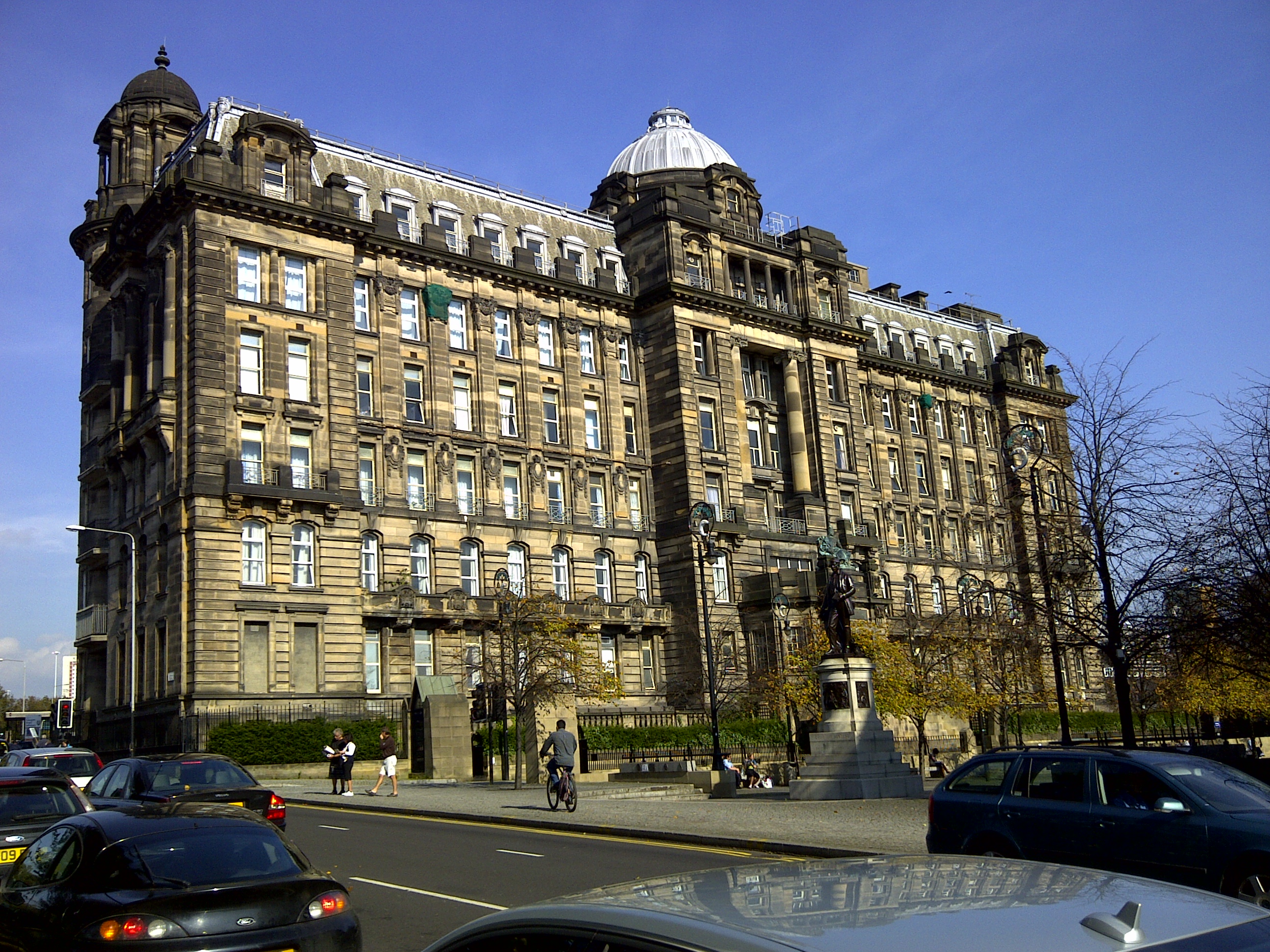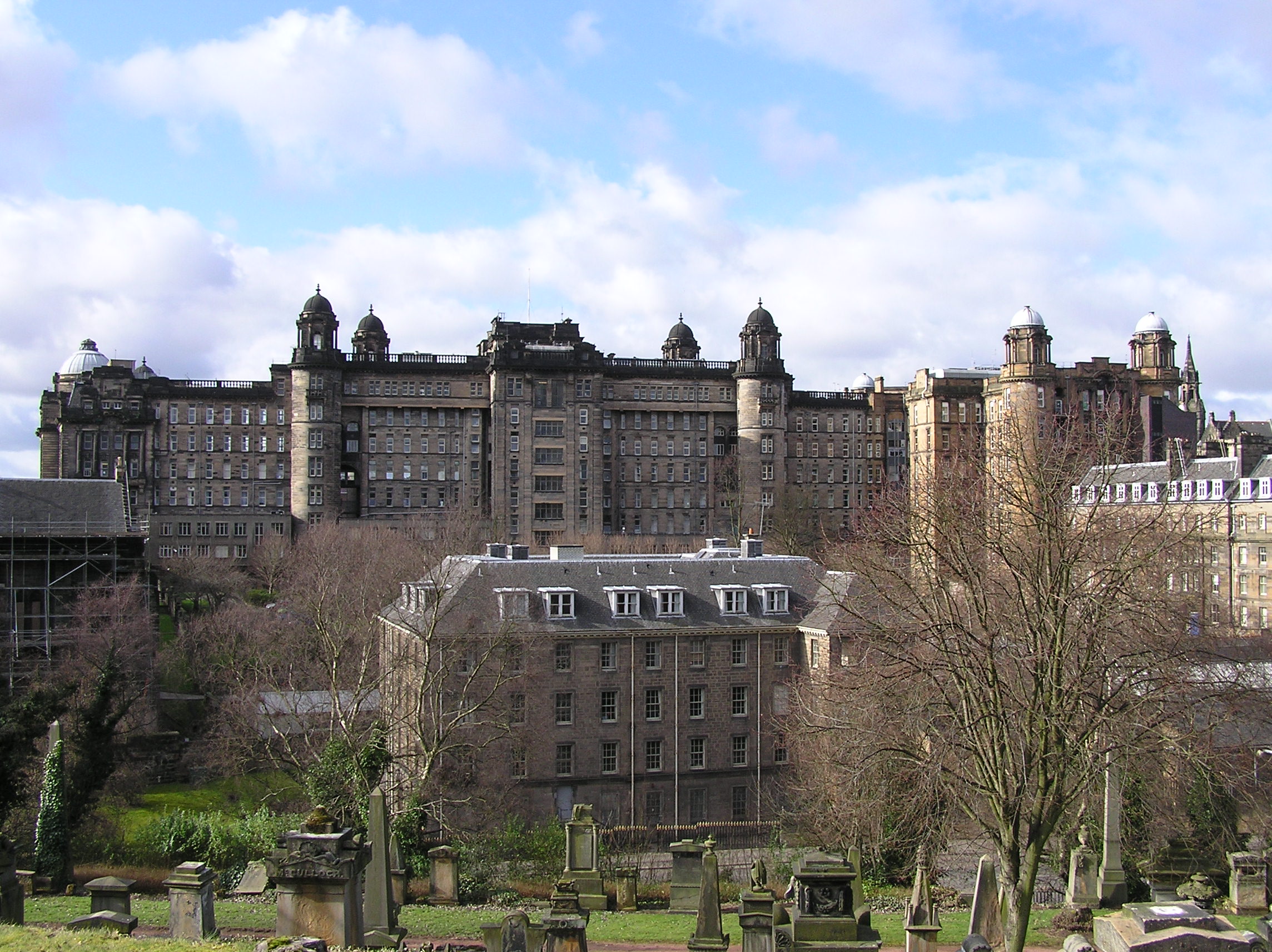Glasgow Royal Infirmary on:
[Wikipedia]
[Google]
[Amazon]
The Glasgow Royal Infirmary (GRI) is a large

 A Royal Charter was obtained in 1791 granting the Crown-owned land to the hospital. The infirmary was built beside Glasgow Cathedral on land that held the ruins of the Bishop's Castle, which dated from at least the 13th century but had been allowed to fall into disrepair. George Jardine, Professor of Logic, was appointed the first manager in January 1793.
Designed by
A Royal Charter was obtained in 1791 granting the Crown-owned land to the hospital. The infirmary was built beside Glasgow Cathedral on land that held the ruins of the Bishop's Castle, which dated from at least the 13th century but had been allowed to fall into disrepair. George Jardine, Professor of Logic, was appointed the first manager in January 1793.
Designed by
 After the closure of the Rutherglen Maternity Hospital and the old Glasgow Royal Maternity Hospital at Rottenrow, a new maternity block was added to the New Building; the
After the closure of the Rutherglen Maternity Hospital and the old Glasgow Royal Maternity Hospital at Rottenrow, a new maternity block was added to the New Building; the
 In 1856,
In 1856,
Engraving of Glasgow Infirmary
by
Scotia Depicta, or the antiquities, castles, public buildings, noblemen and gentlemen's seats, cities, towns and picturesque scenery of Scotland
1804 at
teaching hospital
A teaching hospital is a hospital or medical centre that provides medical education and training to future and current health professionals. Teaching hospitals are almost always affiliated with one or more universities and are often co-located ...
. With a capacity of around 1,000 beds, the hospital campus covers an area of around , and straddles the Townhead and Dennistoun
Dennistoun is a mostly residential district in Glasgow, Scotland, located north of the River Clyde and in the city's east end, about east of the city centre. Since 2017 it has formed the core of a Dennistoun ward under Glasgow City Council, ha ...
districts on the north-eastern fringe of the city centre
A city centre is the commercial, cultural and often the historical, political, and geographic heart of a city. The term "city centre" is primarily used in British English, and closely equivalent terms exist in other languages, such as "" in Fren ...
of Glasgow
Glasgow ( ; sco, Glesca or ; gd, Glaschu ) is the most populous city in Scotland and the fourth-most populous city in the United Kingdom, as well as being the 27th largest city by population in Europe. In 2020, it had an estimated popu ...
, Scotland. It is managed by NHS Greater Glasgow and Clyde
NHS Greater Glasgow and Clyde is an NHS board in West Central Scotland, created from the amalgamation of NHS Greater Glasgow and part of NHS Argyll and Clyde on 1 April 2006.
It is the largest health board in both Scotland, and the UK, which c ...
. It was originally opened in 1794, with the present main building dating from 1914.
History
Founding of the infirmary

Robert
The name Robert is an ancient Germanic given name, from Proto-Germanic "fame" and "bright" (''Hrōþiberhtaz''). Compare Old Dutch ''Robrecht'' and Old High German ''Hrodebert'' (a compound of ''Hrōþ, Hruod'' ( non, Hróðr) "fame, glory ...
and James Adam, the original Royal Infirmary building was opened in December 1794. The original Adams building had five floors (one underground) holding eight wards (giving the hospital just over a hundred beds) and a circular operating room on the fourth floor with a glazed dome ceiling. After a number of additional buildings were added, the first in 1816, a specialist fever block in 1829 and a surgical block in 1860.
St Mungo's College Medical School
St Mungo's College Medical School was set up in 1876 by the medical teachers of the Glasgow Royal Infirmary, after the university had migrated westwards and set up the new Western Infirmary for clinical teaching. At first their students could not take the university examinations. St Mungo's College also had a non-university law school, which prepared accountants and law agents but not advocates. In 1947 it was absorbed into the University of Glasgow's Faculty of Medicine.New building
The original Adams building was replaced with a new building designed by James Miller and opened byKing George V
George V (George Frederick Ernest Albert; 3 June 1865 – 20 January 1936) was King of the United Kingdom and the British Dominions, and Emperor of India, from 6 May 1910 until his death in 1936.
Born during the reign of his grandmother Qu ...
in July 1914. In 1926, the surgical block in which Joseph Lister
Joseph Lister, 1st Baron Lister, (5 April 182710 February 1912) was a British surgeon, medical scientist, experimental pathologist and a pioneer of antiseptic surgery and preventative medicine. Joseph Lister revolutionised the craft of ...
had worked was also torn down for replacement.
Post-war redevelopment
Following the amalgamation of the old St. Mungo's College of Medicine into the University of Glasgow Medical School in 1947, the old College buildings on Castle Street officially became part of the hospital campus. In 1948 the hospital became part ofNHS Scotland
NHS Scotland, sometimes styled NHSScotland, is the publicly funded healthcare system in Scotland and one of the four systems that make up the National Health Service in the United Kingdom. It operates 14 territorial NHS boards across Scotland, ...
.
Visions of a brand new hospital on the site had been part of the Bruce Report as early as the late 1940s, but by 1974, the Greater Glasgow Health Board had formally begun plans for the replacement of the 1914 Miller buildings with a brand new building. This would be located on the north of the hospital site overlooking Alexandra Parade and the M8 motorway. The new building was designed by Sir Basil Spence in a "modular" fashion, where new blocks could be easily added in phases as funding allowed. In the end, only the first phase of Spence's original design was implemented and was finally completed around 1982. It also incorporated new accommodation for the hospital's teaching departments, thus replacing the old St. Mungo's College buildings. The new complex was linked to the Surgical Block of the original Royal Infirmary building at basement level via a link corridor, with a further pedestrian entrance at lower basement level on Wishart Street (adjacent to the Necropolis
A necropolis (plural necropolises, necropoles, necropoleis, necropoli) is a large, designed cemetery with elaborate tomb monuments. The name stems from the Ancient Greek ''nekropolis'', literally meaning "city of the dead".
The term usually im ...
). The new facility was officially named the "Queen Elizabeth Building" by the Queen on a visit in July 1986. Since 1982 the pre-1915 buildings of the Infirmary have been protected as a category B listed building
In the United Kingdom, a listed building or listed structure is one that has been placed on one of the four statutory lists maintained by Historic England in England, Historic Environment Scotland in Scotland, in Wales, and the Northern Ir ...
.
 After the closure of the Rutherglen Maternity Hospital and the old Glasgow Royal Maternity Hospital at Rottenrow, a new maternity block was added to the New Building; the
After the closure of the Rutherglen Maternity Hospital and the old Glasgow Royal Maternity Hospital at Rottenrow, a new maternity block was added to the New Building; the Princess Royal Maternity Hospital
The Princess Royal Maternity Hospital is a maternity hospital in Glasgow, Scotland. It was founded as the Glasgow Lying-in Hospital and Dispensary in 1834 in Greyfriars Wynd, just off the city's High Street. It moved to St Andrew's Square in 1 ...
opened in 2001. Following the closure of Canniesburn Hospital, the Jubilee Building was opened, adding purpose-built Accident & Emergency facilities and a plastic surgery unit, in November 2002.
Following the transfer of the Golden Jubilee Hospital (formerly the HCI Hospital) in Clydebank
Clydebank ( gd, Bruach Chluaidh) is a town in West Dunbartonshire, Scotland. Situated on the north bank of the River Clyde, it borders the village of Old Kilpatrick (with Bowling and Milton beyond) to the west, and the Yoker and Drumchapel ...
to public ownership, much of the cardiology specialism was moved from GRI to the newer facility.
Notable staff and research
 In 1856,
In 1856, Joseph Lister
Joseph Lister, 1st Baron Lister, (5 April 182710 February 1912) was a British surgeon, medical scientist, experimental pathologist and a pioneer of antiseptic surgery and preventative medicine. Joseph Lister revolutionised the craft of ...
became an assistant surgeon at the Infirmary and a professor of surgery in 1860. Running the new surgery block, Lister noted that about half of his patients died from sepsis
Sepsis, formerly known as septicemia (septicaemia in British English) or blood poisoning, is a life-threatening condition that arises when the body's response to infection causes injury to its own tissues and organs. This initial stage is follo ...
. Lister experimented to find ways to prevent sepsis. This experimentation lead to using carbolic acid to clean instruments; he is now considered the "father of modern surgery".
In 1875, a student of Lister, William Macewen
Sir William Macewen, (; 22 June 1848 – 22 March 1924) was a Scottish surgeon. He was a pioneer in modern brain surgery, considered the ''father of neurosurgery'' and contributed to the development of bone graft surgery, the surgical treatm ...
joined the Infirmary surgery as an assistant surgeon, becoming a full surgeon in 1877. While at the Infirmary he introduced the practice of doctors wearing sterilisable white coats and pioneered operations on the brain for tumours, abscesses and trauma.
In 1896, John Macintyre, Medical Electrician at the Infirmary, opened one of the first radiological departments in the world.
In 1908, one of MacEwen's students James Pringle, developed the Pringle manoeuvre which is used to control bleeding during liver surgery.
In the 1950s Professor Ian Donald
Ian Donald (27 December 1910 – 19 June 1987) was an English physician who pioneered the diagnostic use of ultrasound in obstetrics, enabling the visual discovery of abnormalities during pregnancy. Donald was born in Cornwall, England, to a ...
, working in the field of obstetrics and gynaecology, was one of the pioneers of diagnostic ultrasound.
References
Further reading
* Blakemore, Colin; Jenneth, Sheila (2001). ''The Oxford Companion to the Body.'' Oxford University. . * Foreman, Carol (2003). ''Lost Glasgow.'' Birlinn. . * Jenkinson, Jacqueline (1994). ''The Royal: The History of Glasgow Royal Infirmary, 1794-1994'' Bicentenary Committee on behalf of Glasgow Royal Infirmary NHS Trust * Pittock, Murray G. H. (2003). ''A New History of Scotland.'' Sutton. . * Williams, David (1999). ''The Glasgow Guide.'' Birlinn.External links
Engraving of Glasgow Infirmary
by
James Fittler
James Fittler (October 1758, in London – 2 December 1835) was an English engraver of portraits and landscapes and an illustrator of books. He was appointed by King George III to be his marine engraver.
Life
Fittler was born in London in Octo ...
in the digitised copy oScotia Depicta, or the antiquities, castles, public buildings, noblemen and gentlemen's seats, cities, towns and picturesque scenery of Scotland
1804 at
National Library of Scotland
The National Library of Scotland (NLS) ( gd, Leabharlann Nàiseanta na h-Alba, sco, Naitional Leebrar o Scotland) is the legal deposit library of Scotland and is one of the country's National Collections. As one of the largest libraries in t ...
{{authority control
Hospital buildings completed in 1914
Hospitals in Glasgow
NHS Scotland hospitals
Teaching hospitals in Scotland
1794 establishments in Scotland
James Miller buildings
Category B listed buildings in Glasgow
Listed hospital buildings in Scotland
Hospitals established in 1794
Voluntary hospitals